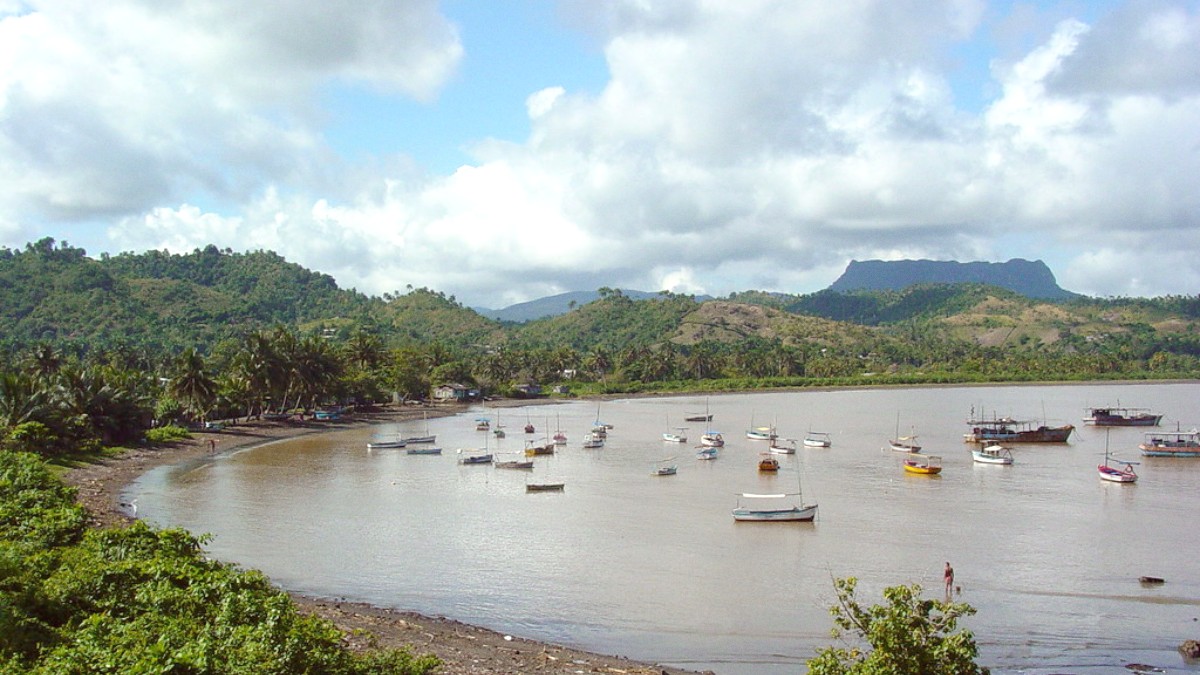
Eastern Cuba, Cuba
Unlike the common rice, beans, and pork found in central and western Cuba, Baracoa embraces its local abundance. The region's bountiful coconut palms and cocoa plantations are central to its culinary identity. Dishes often feature fresh seafood, a testament to its coastal location.
Baracoa's cuisine presents a significant regional variation within Cuba. While congri (rice and beans) and roasted pork are common across the island, Baracoa's focus on coconut, cocoa, and specific seafood preparations differentiates it. It gives a refreshing change for those familiar with other Cuban culinary traditions.
Cubans generally eat dinner later than in many Western countries, often after 7 PM. Lunch is typically the main meal of the day, but dinner can also be substantial.
Casual dress is acceptable in most eateries, from street stalls to mid-range paladares. Tipping (10-15%) is customary, especially in paladares and restaurants, as service charges are not always included.
Cubans are generally very hospitable. Your Casa Particular hosts often serve large, home-cooked meals.
This traditional sweet consists of grated coconut, honey, sugar, nuts (often almonds or cashews), and fruit (guava or orange), all wrapped in a dried palm leaf cone.
Find at street vendors, local markets, and roadside stands.
A unique Baracoan specialty, this dish resembles a tamale. It uses grated green plantains, coconut milk, and often includes pork, wrapped in a plantain leaf, then boiled.
Ask your Casa Particular host if they prepare it.
Fresh local fish, shrimp, or lobster simmered in a rich, flavorful coconut milk sauce, often with vegetables like peppers and onions. Baracoa's sea proximity means high-quality seafood.
Most paladares serving seafood offer this dish.
A soup or stew made from leafy greens (similar to spinach or taro leaves) often with pork or seafood. This dish mirrors the region's agricultural bounty.
Refreshing juices made from local, seasonal fruits like guava, mango, or pineapple are widely available from small stalls.
True fine dining, in the international sense, is limited. Higher-end paladares, however, present excellent quality food, refined preparation, and a pleasant ambiance. These places focus on fresh, local ingredients and a more curated menu.
Numerous paladares (private restaurants) define the dining scene. These family-run establishments present a range of Cuban and Baracoan dishes, often giving the best dining experiences in terms of quality, authenticity, and value. They often have welcoming, personal service.
For very cheap eats, seek out informal "Peso Food" stalls. Smaller, less formal eateries also have home-style cooking at lower prices. The central market is good for fresh fruits and vegetables.
Can be a challenge but is possible. Focus on vegetable dishes, rice and beans (congri), and salads. Advise your Casa Particular host of your dietary needs in advance; they often arrange vegetarian-friendly meals.
Clearly communicate restrictions to restaurant staff: "Soy vegetariano/a" or "No como carne."
Awareness of specific allergens like gluten is low. Communicate clearly, potentially using a translation app or written note explaining your allergy in Spanish. Rice, beans, and fresh produce are generally safe. Cross-contamination is a risk. Travelers with severe allergies should exercise extreme caution and consider bringing their own allergen-free snacks. Halal and Kosher options are extremely limited to non-existent.
Your Casa Particular host is often the best resource for tailored meals. Bring supplies if your dietary needs are strict.
Some Casas or local guides offer informal cooking demonstrations on Baracoan cuisine, focusing on local ingredients like coconut milk and cocoa.
Opportunities exist to visit cocoa farms (e.g., Finca Duaba) or coconut plantations, with insights into production and tastings.
Enjoy a meal at a rustic restaurant on the banks of the Toa River after a boat trip, often serving fresh fish with natural views.
Meals at Casas Particulares are a personal dining experience, giving authentic flavors in a family setting.
Awareness of specific allergens like gluten is low. Clear communication with restaurant staff using Spanish phrases or a written note is important.
Cross-contamination can occur.
Travelers with strict or complex dietary needs should consider bringing snack bars, protein powders, or other specific dietary items from home, especially for remote areas.
Casa hosts are your best resource for meal tailoring.
Informal cooking classes at Casas Particulares or with local guides present a hands-on way to learn about local ingredients and techniques.
Dining in Baracoa is a social occasion. Engage with locals, share stories, and learn about their daily lives over a meal.
Given Baracoa's coastal location, seafood is incredibly fresh, often caught the same day. This quality sets it apart.
Baracoa is Cuba's chocolate capital. Cocoa integrates into both sweet and savory dishes, an unique culinary element not found elsewhere on the island.
Always drink bottled water. Tap water is generally not safe for consumption.
Bottled water widely available.
Opt for freshly cooked meals and avoid raw or uncooked foods if you have a sensitive stomach. Select establishments that appear clean and busy.
Freshly cooked preferred.
The abundance of tropical fruits, cocoa, and fresh seafood from the surrounding region truly shapes Baracoa's unique dishes.
Coconut milk adds a creamy, subtly sweet dimension to savory dishes, a hallmark of Baracoan cuisine seldom found elsewhere in Cuba.
Dining in Casas Particulares offers direct cultural exchange and a taste of homemade meals, a cornerstone of the Baracoa visit.
Don't miss the chance to try fresh local juices and tropical fruits; they are incredibly flavorful and hydrating in the tropical climate.